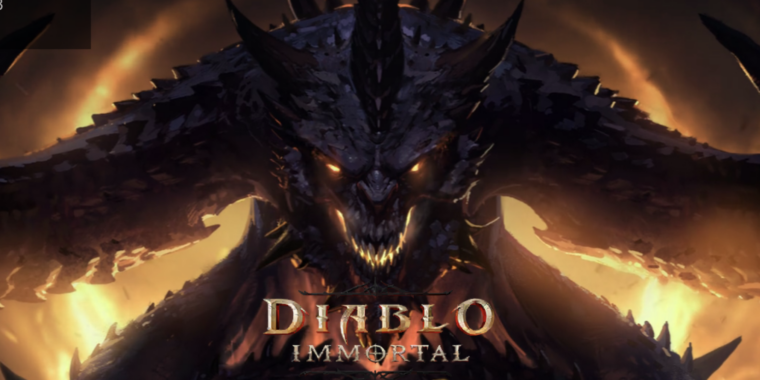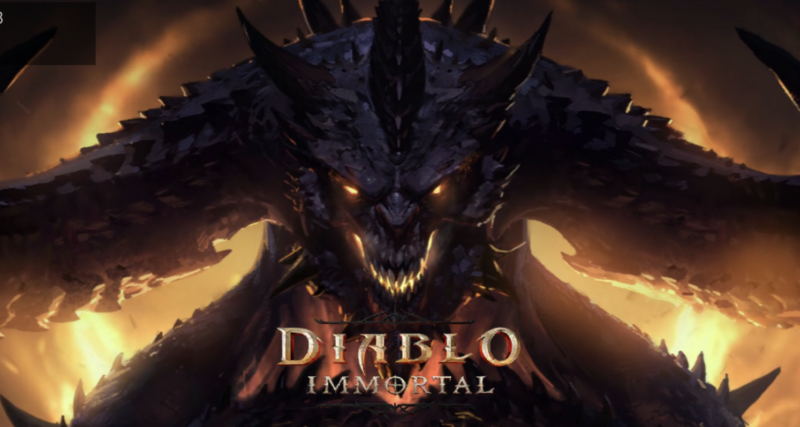
Activision Blizzard
The best thing about Diablo Immortal is that it is a fun, professionally crafted action-RPG befitting the Diablo name. The new Activision Blizzard game, launching on iOS and Android later on Wednesday and Windows PCs on Thursday, immediately impresses as one of the better smartphone-first action-RPG games on the market. And my 10 hours in its universe have thus far allayed my previous fears about its production values.
The worst thing about Diablo Immortal is its economy. My pre-release testing of the final game was regularly marked with menus and in-game characters alike selling me new types of “orbs,” “stones,” gold, and other confusing paths to microtransactions. At best, the game can be enjoyed despite this nonsense.
But the bean counters at Activision Blizzard aren’t willing to offer a one-time purchase in Diablo Immortal for fair, nag-free adventuring. (Worse, as of press time, the game publisher appears to double down on a particular 2012 fiasco.) That’s doubly tragic when the game is otherwise a fun, smartphone-friendly option for one more dungeon run—which leaves me stuck between recommending a perfectly fine smartphone adventure and warning about its ickiest caveats.
Driving a Rift between fans
I’ll start by getting to the microtransaction content since at least two nations have banned Diablo Immortal from their marketplaces ahead of its launch. The game indeed includes “loot boxes” that run afoul of regulations in the Netherlands and Belgium, though DI‘s system differs from popular examples like EA Sports’ card packs or Fortnite‘s “llama” system.
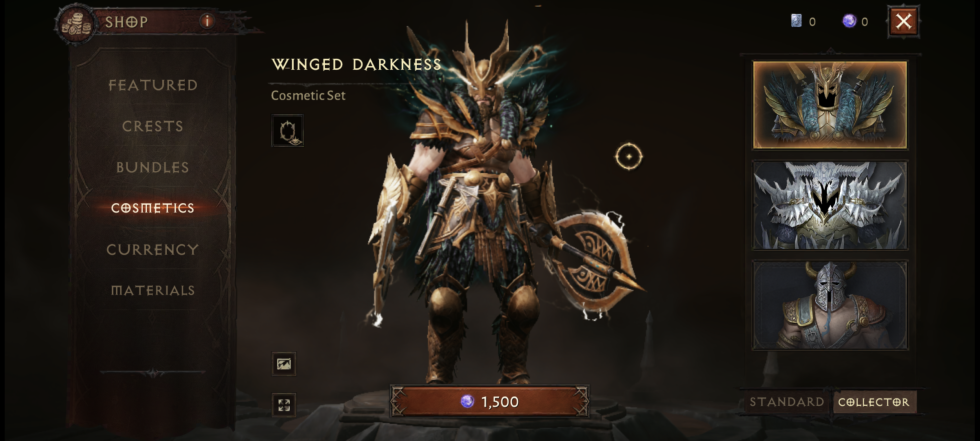
Activision Blizzard
Everything below relates to purchasing possibilities related to Diablo Immortal‘s gameplay and mechanics, not cosmetics. If you like the idea of paying $10 to $15 to dress your favorite warrior in outlandish garb, that’s here as well. I believe those kinds of purchases prey upon children who equate flashier cosmetics in social video games with real-life social clout, but that’s tame compared to the further depths of Diablo Immortal‘s economy.
-
On their face, Elder Rifts (no, not “Elden Rings”) seem like classic Diablo stuff. They add Interesting modifiers to a randomly generated dungeon run, and they reward cool, unique loot. But…
-
…the best loot requires spending “legendary crests,” which either take forever to grind via in-game mechanics or can be bought instantly with real-world cash.
The game’s linear, Diablo III-like introduction eventually leads players to a hub town, and its storefronts advertise the game’s full slate of in-game purchase opportunities. The loot-boxiest of these is the “Elder Rift,” which is a randomly generated dungeon delve. Players can “guarantee” the number and quality of each dungeon run’s rewards based on the number and type of “crests” they dump into its entrance. (When I say “rewards,” I mean stuff that your character can equip for special offensive or defensive abilities. The first one I earned gave all of my attacks a 10 percent chance to add an electric spark to attacks that chained to hit other nearby foes. Stuff like that.) Lower-level crests can be earned in-game, while “legendary” crests must be purchased with real-world money (after players are forced to burn through one free legendary crest).
Imagine a loot box that requires a 5-10 minute spike in challenge to see the randomly awarded loot inside, and you’ve got legendary crests in a nutshell. To Activision Blizzard’s credit, if a player elects to use a crest and then either fails a Elder Rift challenge or gets disconnected from the game’s always-on servers, the crest isn’t lost; affected players get them back to use again.
The F2P equivalent of hot dogs and buns
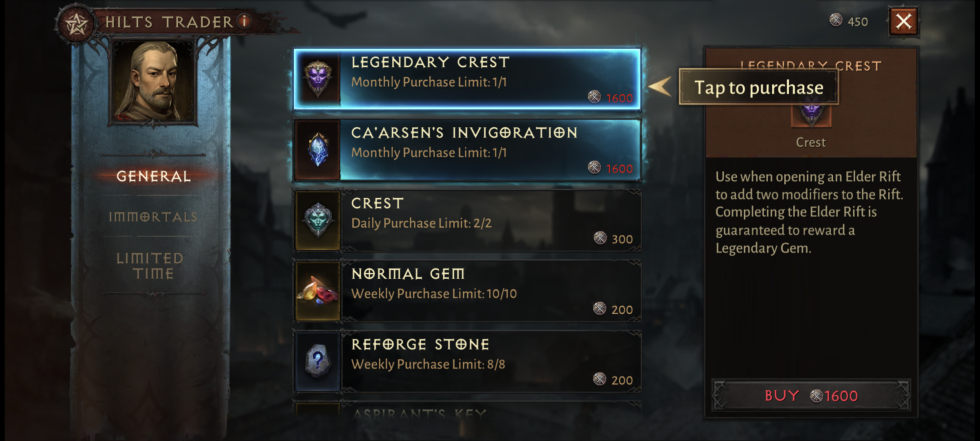
Crests are just one available currency, split between free and paid versions. This game’s variety of confusing currencies, split between stuff you can earn in-game and things that require cash, resembles the crap I detest in other bottom-of-the-barrel F2P fare. Worse, whenever you’re short on a currency to do something in Diablo Immortal, Activision Blizzard offers a tappable tooltip icon. This points players toward paths to maybe earning the item or crafting element in question somewhere in during normal gameplay… or paying cash to get it instantly.
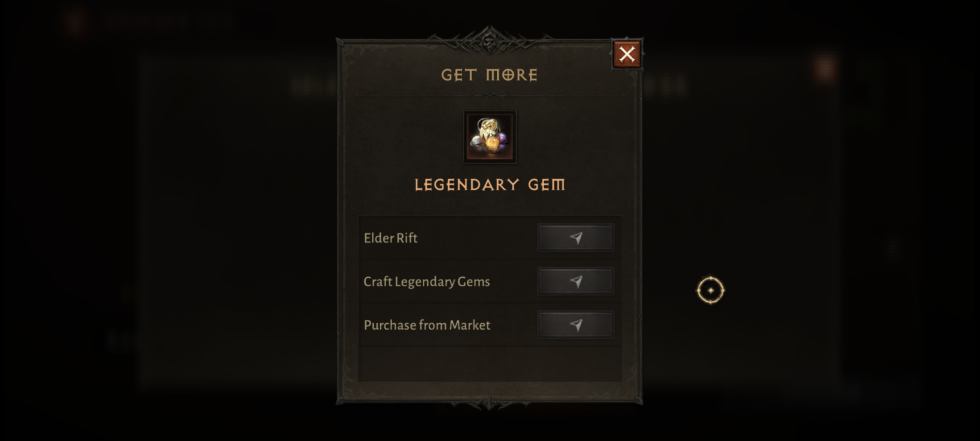
Activision Blizzard
Activision Blizzard tells you some of this stuff can be crafted, as if to insist that there’s a “fair,” RPG-styled path to these power-ups. But such crafting requires materials that take a long time to grind during normal gameplay. And you can only craft a certain number of these per week or month. Want it more quickly or with fewer restrictions? Cha-ching. The game also includes a “platinum” currency that appears to require the paid “orb” currency to acquire. (“Spend 500 orbs to get 5,000 platinum pieces; spend $9.99 to get 600 orbs.” The F2P equivalent of hot dogs and buns.)
-
All of this stuff requires paying $9.99 per month. Worse, the four items on the left must be claimed on a day-by-day basis during your subscription period. Miss a day? You miss the item.
Activision Blizzard -
A clarification via tooltip about how “market” access works if you buy into this subscription package.
Worse than that is the game’s “Boon of Plenty” microtransaction package, which currently costs $9.99 per month and must be re-upped every month for its benefits to kick in. These include a more extensive inventory for your active character’s loot and increased perks for the game’s player-to-player item sales marketplace. You also have to log in every day to claim this purchase’s slew of in-game items, as they’re treated as a daily login bonus. Miss a day? Too bad; the thing you paid for vanishes.
-
Use cash to buy orbs.
-
Then use orbs to buy platinum, which you’ll primarily spend at the “market.” That’s the name of this game’s Diablo III auction house, which unlocks roughly six hours into a character’s progression.
I’m not sure what’s worse, as far as Activision Blizzard’s business decisions are concerned: denying paying customers anything they paid for or apparently re-creating the cursed Diablo III auction house. Diablo Immortal‘s aforementioned “player-to-player item sales marketplace,” simply dubbed the “market,” was not active ahead of the game’s public launch, but its menus and reliance on the paid “platinum” resource resemble Diablo III’s disastrous take on the concept. Lest you forget, Blizzard spent a lot of time undoing and apologizing for the auction house. (Activision Blizzard representatives did not immediately answer questions about Diablo Immortal‘s market ahead of this article’s publication.)

